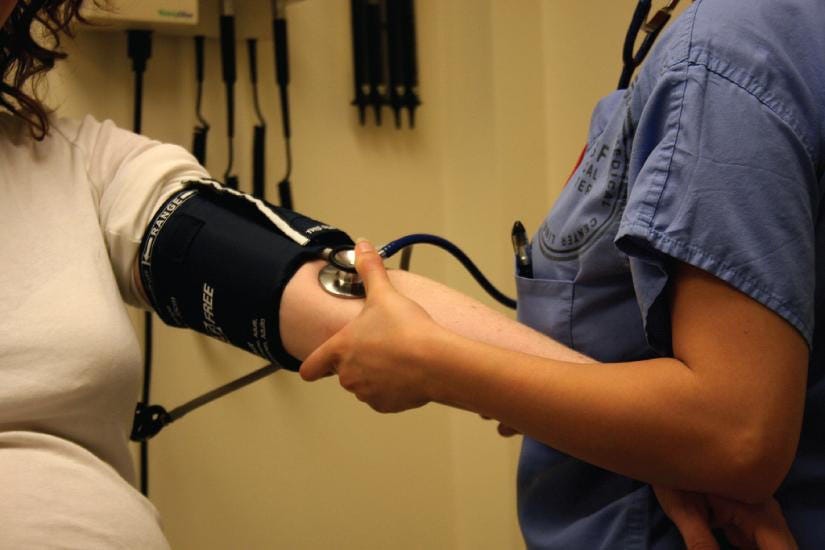![Guidelines from the American Heart Association and American College of Cardiology were recently lowered the high-blood-pressure threshold to 130 over 80. [Photo by OpenStax (Own work) [CC BY-SA 4.0 (http://creativecommons.org/licenses/by-sa/4.0)], via Wikimedia Commons]](http://127.0.0.1/wordpress/wp-content/uploads/2022/01/ghows-DA-66c45f37-2658-36b0-e053-0100007f9745-c796ba08.jpeg)
BLOOD PRESSURE
Medical professionals aren't taking enough care when taking blood pressure, according to a recent story on NPR's "Morning Edition."
Guidelines from the American Heart Association and American College of Cardiology, which lowered the high-blood-pressure threshold to 130 over 80, also included the following do's and don'ts for patients, according to the story:
Do:
Sit in a chair, feet flat on the ground, legs uncrossed, back supported, without talking, for at least five minutes before you get your blood pressure measured.
Don't:
Exercise, consume caffeine or smoke within 30 minutes of your test.
Do:
Empty your bladder before the test.
Don't:
Sit or lie on the exam table.
Do:
Roll up your sleeve so the cuff rests on bare skin.
Don't:
Let your arm dangle or rest in your lap during the reading; rest it on a surface like a table.
TIP OF THE WEEK
Nodding makes you likable
Subtle movements, like nodding your head, can make you seem more approachable and likeable, according to a recent study cited at Sciencedaily.com.
A study by Hokkaido University Associate Professor Jun-ichiro Kawahara and Yamagata University Associate Professor Takayuki Osugi found that, "The act of nodding positively affects the subjective likability of people by about 30 percent and their approachability by 40 percent," the post said.
MEDS
Tips for remembering to take medication
The Mayo Clinic recently posted tricks for remembering to take your meds.
1. Use a pillbox with days of the week. This visual aid works for tracking doses.
2. Match medications to a daily habit. Put your pills next to your coffee cup.
3. Take advantage of technology and set a reminder.
4. Mark a calendar or whiteboard with a hash mark for each pill.
5. Set up refill reminders with your pharmacy or have automatic refills sent.
6. Try a color-coding system, with yellow for morning meds or blue for evenings.
7. Understand the purpose of each pill. Know the difference between a beta blocker and a statin.
8. Keep it simple. Find a method that works for you and stick with it.
For more information, visit mayoclinic.org.
RUNNING
Want to run a marathon?
Haylee Barber, who describes herself as a "newbie runner," shared the following tips for training for a marathon at http://www.nbcnews.com.
1. Make a plan — and make it visual. Barber used a physical calendar, in addition to an app.
2. Enlist a friend. She said a training partner helped hold her accountable.
3. Build up your mileage slowly. Take the time to train properly.
4. Don't let skipping a run throw you off track or derail your plans.
5. Use social media to your advantage. You can get motivation from Facebook.
6. Pick the right race for you.
7. Invest in good running shoes.
8. A fitness tracker can help set you up for success because it can help you learn to pace yourself.
9. Hydration is important. And that's an understatement, Barber said.
10. Don't put a lot of pressure on yourself on race day. You don't need to set an aggressive goal.
— Brandpoint
This article originally appeared on Crestview News Bulletin: Health Watch: How to get an accurate blood pressure reading
